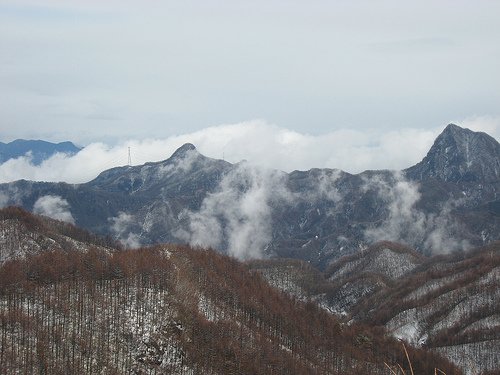I’ve written before about how Japan is a very safe place — so safe it might just kill you with boredom. Swimming pools in Japan generally have two or more lifeguards on duty at all times, although it’d be pretty hard to drown since the water is never deeper than your waist, and dangerous things like diving boards are not allowed. My son and I didn’t realize what we were missing until we went to visit family in Maryland, and got to jump off the high dive at the local pool, something a non-Olympic swimmer could only dream of doing in Japan. People are constantly bombarded with silly safety messages here, which remind you to “stand behind the yellow line” on train platforms because apparently trains are dangerous or something, and there’s even a voice to tell you how to get on or off an escalator safely in department stores. Now the latest trend in obsessive safety thinking is condemning swings, sliding boards, jungle gyms and other equipment at playgrounds due to an infinitesimally small number of tragic accidents involving children at play. Japan is nothing if not the land of duality, though, and just as it tries to “think of the children” on the playground, the country still lacks some of the basic safety attitudes we take for granted in the U.S., like always using approved child carseats when driving, using baby gates to keep little ones from dangerous parts of the home, and so on.
There are some key areas where the U.S. is well ahead of Japan, including availability of Mexican food and the proliferation of sports bar-themed restaurants with excellent beer. One area where Japan has a comfortable lead, though, is the delivering of packages via its takuhai (private delivery company) system, as seen in the Ghibli animated classic Kiki’s Delivery Service except with packages being delivered by polite, efficient men in trucks rather than by a witch and black cat on a broomstick. One of the great conveniences of flying out of Japan is being able to send your suitcases to the airport via companies like Yamato or Sagawa for around $9 per suitcase, allowing you to hop on the train or bus to the airport without a lot of heavy stuff to lug along with you. I recently bought a used Mac G4 tower from a friend to use as a backup server at J-List. My friend dropped the heavy box off at the 7-11 at 9 pm on a Sunday night, and the package reached me, two prefectures away, less than 12 hours later. Total cost? Just $15.
As everyone knows, the Japanese are capable of coming up with some amazingly creative (?) English phrases, like “Body Feels EXIT,” “Get Chance and Luck,” “Fappy, Fax Makes It Happy” or “All Your Base Are Belong To Us.” There are several reasons why this happens, including the fact that the Japanese nearly always learn English in a bubble, sitting passively as grammar and vocabulary are explained to them in Japanese by Japanese teachers, with the amount of linguistic input from living, breathing native English speakers being quite limited. Also, when a Japanese person studies English for six years (high school) or ten years (college), it’s understandable that they’ll want to strut a bit and use what they’ve learned, even if it results in something like “For restrooms, go back towards your behind.” But the biggest reason there’s so much colorful English here has to be that, to many Japanese, English is really just a decoration, something to sprinkle around to add color to one’s environment without thinking about it too deeply. I was reminded of this fact over the weekend, when I took my family to the Pizza La in Karuizawa and sat down in the to enjoy some pizza. Perhaps because Karuizawa is a town discovered and colonized by Europeans soon after the Meiji Period, the restaurant had a bookshelf filled with English books for customers to browse through while they ate…although no one in the place was showing any interest in them. My family dug in though, each finding some interesting book to page through — I scored a biography of Hemingway from the 1960s that looked interesting. We even did something we’d never have done in the U.S., liberating some of the books to read at home, since it was clear no one was going to be wanting them anytime soon, and an unread book is such a lonely thing. I’ll make it up to the Pizza La people by bringing some of the English childrens’ books my kids are too old for by next time I’m in the neighborhood.
One of the fun things about visiting Tokyo is walking down the street and getting pocket tissue handed out to you by people advertising businesses like banks, hairdressers, or newly opened restaurants. J-List lets you experience this thrill with the free authentic Japanese pocket tissue packet that we include with most every order you made from us. We say “most,” because we won’t include tissue with orders in cases where the tissue would bend or damage your order (like a thin magazine or doujinshi). You can also buy ten of our wacky pocket tissues for the low price of just $3.00, if you have an especially runny nose.
















